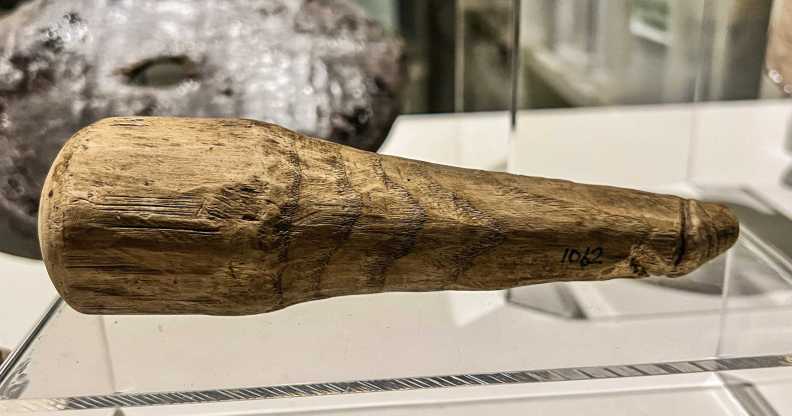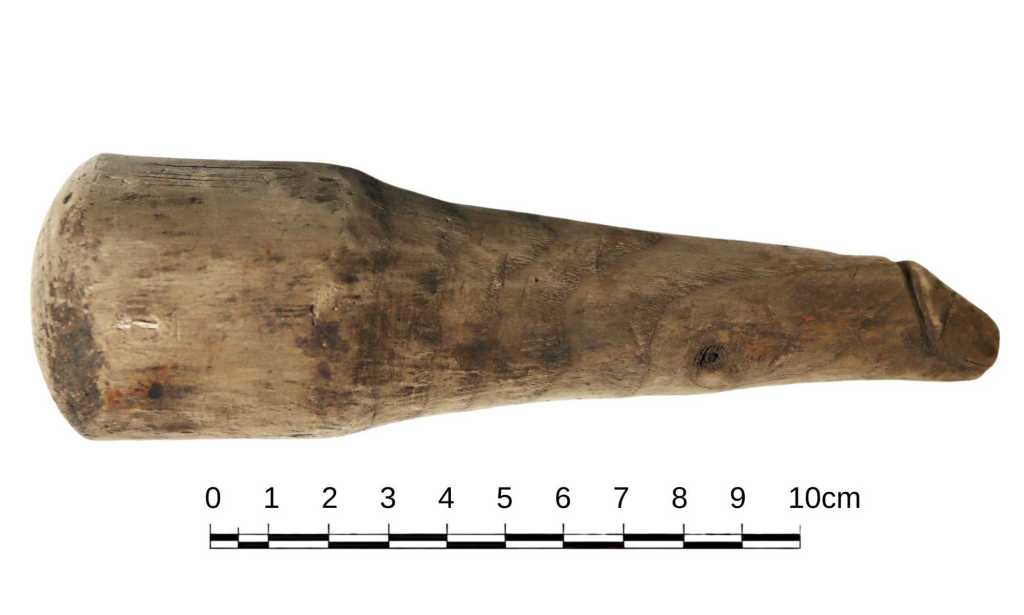Ancient wooden penis could be a Roman dildo, scientists say: ‘It’s kind of astounding’

The phallic object was originally thought to be a darning needle (Newcastle University)
A six-and-half-inch wooden penis discovered at a Roman fort in northern England could be the first-known example of a dildo – rather than as a darning needle, as archaeologists first assumed.
The carved member was discovered in a ditch alongside dozens of shoes and dress accessories from the 2nd century, at Vindolanda – a Roman auxiliary fort in Northumberland – in 1992.
Originally, the artefact was catalogued as a darning needle but new analysis by experts at Newcastle University and University College Dublin suggest it might have been used during sex.
Research by the scientists has revealed that both ends of the phallus were noticeably smoother, indicating repeated contact over time – such as during sexual intercourse.
However, they are still considering what else it could have been used for, including as pestle or a good-luck charm.

Dr Rob Collins, senior lecturer in archaeology at Newcastle University, said: “The size of the phallus and the fact that it was carved from wood raises a number of questions as to its use in antiquity.
“We cannot be certain of its intended use, in contrast to most other phallic objects that make symbolic use of that shape for a clear function.
“We know that the ancient Romans and Greeks used sexual implements. This object could be an example of one.”
Images of penises, or phalli, were widespread across the Roman Empire and were commonly believed to be a way to protect against bad luck.
These are often depicted in frescoes and mosaics or formed part of the decoration of other objects, such as being embellished on to a knife handle or into pottery.
Small, portable phalli made of bone or metal were also often worn as pendants around the neck.
Artwork featuring sexually explicit scenes and nudity were common during the Roman era.
One such example includes the Warren Cup, a silver drinking cup decorated with two scenes of male lovers which the British Museum shared on its Instagram page to mark LGBT+ History Month.
“Explicit sexual images were not unusual in the Roman world, and objects like this one remind us that the way societies view sexuality can differ widely,“ according to the museum’s Twitter page.
“I have to confess,” Collins told The Guardian, “part of me thinks it’s kind of self-evident that it is a penis.
“I don’t know who entered it into the catalogue. Maybe it was somebody uncomfortable with it or didn’t think the Romans would do such silly things.”
Despite describing the possibility that the object could be a sex toy as “exciting”, Collins urged caution as the exact use of the object is still unclear and may not have been for such satisfying purposes.
He said: “Sometimes they [dildos] weren’t always used for pleasure… they can be implements of torture so I’m very conscious of using the term ‘sex toy’. Hopefully that is what it was used for. That is the most exciting and intriguing possibility.
“If that is the case, it would be, to our knowledge, the first Roman dildo that’s been encountered from archaeology. We know from Greek and Roman poetry and art that they used dildos. But we haven’t had any archaeological examples found.
“If it is that and it is found up here on the northern fringe of the empire and not down in the rich heartland of Roman Italy… it is kind of astounding.”
How did this story make you feel?

